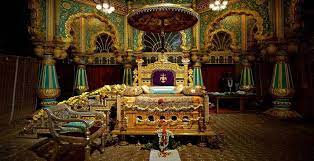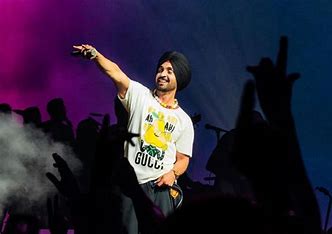Jewels are a royal’s timeless friend. The blue-blooded families across the globe possess some of the rarest jewels, pristine not just in price but also in their exquisite finish, design, and setting. It was during the British Raj that many Indian Maharajas took trunks filled with their ancestral diamonds, rubies, and emeralds, commissioning European ateliers to refurbish them in the existing art deco and Victorian styles. Soumya Bhardwaj chronicles six priceless pieces that were made for the Maharaja.
The Nizam of
Hyderabad’s
Jacob Diamond
The Jacob Diamond of the Nizam of Hyderabad holds an extraordinary story of grandeur. Named after its first individual owner (Alexander Malcom Jacob), this Golconda diamond, weighing an astonishing 184.75 carats, stands as one of the world’s largest and most mesmerising gems. Reportedly bigger than the Kohinoor in its uncut stage, it was found in the shoes of the sixth Nizam of the Hyderabad state, Mir Mahboob Ali Khan, at the Chowmohalla palace. When handed down to Mir Osman Ali Khan (his son), he famously used it as a paperweight for a long time.
It was in 1891 that Jacob bought the gem from a diamond syndicate in Amsterdam and decided to sell it to the Nizam. Initially, after having paid in advance, the latter refused to pay the agreed price. Some reports claim this was due to the pressure created by the British to back out of the deal because Jacob purportedly was a Russian spy, while others claim it was just because the Nizam developed an aversion towards the diamond. However, it was the latter who won the legal battle.
It was bought by the government of India in 1995 for an estimated $3 million and presently finds its safe haven within the vaults of the Reserve Bank of India in Mumbai.
The Mysore Palace Throne
Stepping into the regal realm of Mysore Palace, our gaze is captivated by the resplendent Mysore Palace Throne, also known as Chinnada Simhasana or Ratna Simhasana in Kannada. Forged in gold and adorned with precious gemstones, this grand seat embodies the magnificence of the Wodeyar dynasty.
It showcases a captivating throne, exhibited to the public during the Dasara festival. With a rich history, this throne is believed to have been originally owned by the Pandavas and brought from Hastinapura to Penugonda by Kampilaraya. It consists of a main seat, steps, and a golden umbrella adorned with slokas honouring Krishnaraja Wadiyar III. The sides of the throne depict elephants, horses, soldiers, and chariots, while the royal seat, called Koormasana, is luxuriously adorned with stone-studded cloths. The backrest features intricate carvings of birds, lions, and flowers, with the central presence of Goddess Chamundeshwari surrounded by divine figures.
Supported by horses, this grand throne is crowned by a royal umbrella, which carries blessings for the Mysore king. Atop the umbrella sits Huma, a celestial swan with an emerald beak, believed to bestow perpetual wearing of the royal crown upon the one upon whom its shadow falls. The Mysore Palace’s throne is not only a stunning display of craftsmanship and artistry but also a remarkable artefact steeped in history and tradition, offering a glimpse into the regal splendour of a bygone era. Its intricately detailed craftsmanship and timeless elegance are an embodiment of the royal heritage that echoes through the hallowed halls.
The Baroda
Pearl Canopy
Suspended in time, this bejewelled masterpiece captures the imagination with its grandeur, a testament to the romantic era of royal indulgence.
Part of a five-piece set, this mesmerising creation commissioned by Maharaja Khande Rao Gaekwad consists of approximately 950,000 precious ‘Basra pearls’, emeralds, sapphires, and rubies in elaborate floral arabesques. The set was originally meant as an offering for the Prophet’s Tomb in Medina but stayed in Baroda’s treasury. This 12-metre-diameter carpet showcases exquisite craftsmanship, reflecting the prosperous pearl trade between the Arabian Gulf and India. Influenced by the Mughal style, which combines Persian and Indian traditions, the canopy features intricate swirling vinery and dense floral elements adorned with rubies, emeralds, and sapphires set in gold. This precious canopy is one of two surviving pieces from the original set, along with the “Baroda Pearl Carpet.” It was kept in the state’s treasury before coming into the possession of Sita Devi. Displayed at the Victoria & Albert Museum in 2010, it was later sold at auction for 2.3 million. In a recent auction, it fetched $22 million and is now exhibited at Christie’s Inc. in London. Suspended in time, this bejewelled masterpiece captures the imagination with its grandeur, a testament to the romantic era of royal indulgence.
Diamond Sarpech: Maharaja Duleep Singh of Lahore
Maharaja Duleep Singh of Lahore, the final ruler of the Sikh empire, can be seen exuding regal elegance while donning a remarkable diamond sarpech. As the successor to Maharaja Ranjit Singh, who established the Sikh Empire in the present-day Punjab region, Maharaja Duleep Singh carried forward the grandeur and splendour associated with his royal heritage. The diamond sarpech, a distinctive ornament designed specifically for turbans, represents the pinnacle of opulence when adorned with diamonds and is reserved exclusively for royal turbans.
The sarpech worn by Maharaja Duleep Singh features three majestic plumes crafted entirely from shimmering diamonds, creating a breathtaking display of brilliance and magnificence. Enhancing the allure of this exquisite piece is a dazzling emerald, meticulously positioned at the centre, radiating a captivating aura. This remarkable jewellery choice exemplifies the Maharaja’s penchant for extravagant and awe-inspiring adornments, evident in the captivating photograph capturing his opulent style.
The diamond sarpech serves as a testament to the artistic craftsmanship and exquisite taste that permeated the Sikh empire, reflecting a cultural heritage that embraced beauty, luxury, and the glorification of regal attire. Maharaja Duleep Singh’s choice to don such an extraordinary accessory further reinforces the importance placed on symbolising power, wealth, and prestige through the magnificent jewellery of the era.
Diamond Dastar
of Maharaja
Shrimant Sir Ranjit Singhji Sahib Bahadur of Ratlam
Besides the renowned Nizams and Gaekwars, the rulers of princely states like Ratlam, Benares, and Kapurthala also displayed a fondness for exquisite jewellery. In his renowned portrait of Maharaja Shrimant Sir Ranjit Singhji Sahib Bahadur of Ratlam, his attire showcases a remarkable display of opulence. Adorning his turban, or dastar, is a mesh of intricate sarpattis crafted from diamonds, pearls, and other precious gemstones.
Furthermore, he wears a kundan haar adorned with diamonds, pearls, and gemstones, along with a pearl choker and earrings.
Even the Maharaja’s angarkha, or garment, is embellished with a decorative pattern of sequins and gold thread. This portrait exemplifies the Maharaja’s affinity for lavish jewellery and highlights the grandeur associated with the princely states of India.
Diamond Crown of the Maharaja of Kapurthala
In his renowned portrait, the Maharaja of Kapurthala is adorned in regal splendour, showcasing his affinity for magnificent jewellery. A magnificent diamond crown graces his head, exuding an aura of majesty and authority.
Around his neck, he wears a resplendent necklace adorned with 12-string Basra pearls, their lustrous beauty adding a touch of elegance to his attire. Completing his ensemble is a bejewelled diamond belt, further accentuating his status and love for opulent adornments.
The Maharaja’s attire is a traditional sherwani embellished with intricate gold brocade embroidery, showcasing the rich craftsmanship of the region. A distinguishing feature is his sash, which adds a touch of distinction and symbolises his esteemed position. Notably, he proudly wears the Star of India brooch, an esteemed honour bestowed upon select Indian rulers by the British Crown, signifying their close association and recognition.
The Indian royal heirlooms showcased in this list offer a glimpse into a world steeped in opulence, artistry, and rich cultural heritage. Each artefact holds a story of its own, encapsulating the legacy of royal dynasties that once adorned the land. From breathtaking jewels to intricately crafted carriages, these treasures stand as testament to the unmatched grandeur and refined taste of India’s royal families.







